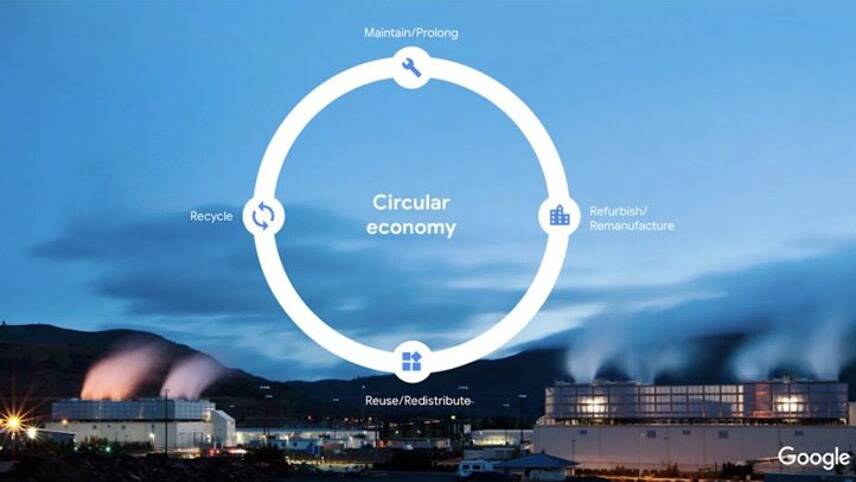Register for free and continue reading
Join our growing army of changemakers and get unlimited access to our premium content

A key focus of the strategy is that of the built environment. Image: Google
Announced earlier this week, the Circular Google initiative introduced a new goal to “maximise the reuse of finite resources across [it’s] operations, products and supply chains and enable others to do the same”.
While lacking tangible and time-based goal for the overall ambition, the new strategy has set numerous sub-goals across the tech company’s key operations, products and services.
For offices and staff, Google aims to reduce single-use beverage use per seated head count (SHC) at its top 25 office sites by 35% by 2019, rising to 50% by 2020.
By focusing on designing out waste and pollution, Google will develop supply chain contracts to prioritise and accept secondary use materials by 2020 and build 100% of consumer electronic products launching from 2022 onwards to maximise recycled content use where possible.
“The challenges to making this vision a reality are as daunting as they are exciting. It demands that we redefine how systems work—from what we value and the choices we make, to the assumptions and industrial processes that have been standard practice across our economy for decades,” Google’s chief sustainability officer Kate Brandt said in a blog post.
“Our new circular Google strategy is part of our wider effort to build sustainability into everything we do.”
Google, powered by 100% renewable energy across its global facilities, defines ‘maximise reuse’ as the “implementation, to the fullest extent possible, of circular principles”, including both products and systems.
Zero-waste built environment
A key focus of the strategy is that of the built environment. “Zero-waste data centres” will be targeted and as of 2017, 18% of Google’s newly deployed servers were remanufactured machines, and 11% of the components used for machine upgrades were refurbished. Rather than contributing to waste, equipment that can’t be used will be resold. In 2017, Google resold more than 2.1 million units into the secondary market for reuse by other organisations. Zero-waste to landfill from data centres is an existing commitment, with 91% currently diverted from landfill.
Landfill diversion from offices currently sits at 78% and Google is focusing on construction and deconstruction to contribute to its circular vision. Google has been implementing interior ‘salvage and reuse’ at the interior building scale since 2012. Last year, the company started work with the Ellen MacArthur Foundation to explore the triple bottom line benefits of deconstruction.
Other targets of the new initiative include evaluating regenerative strategies for 100% of Bay Area district infrastructure (including energy, water, and waste) and reducing food and inorganic waste.
At a global scale, it has been estimated that transitioning to a circular economy could generate $4.5trn in new economic output by 2030. As such, Google is leveraging its own technological expertise to help other sectors transition to closed-loop economies. Google has partnered with fashion brand Stella McCartney on the first phase of a new machine learning data analytics tool to improve the transparency of the supply chains for the fashion industry, for example.
Matt Mace


Please login or Register to leave a comment.